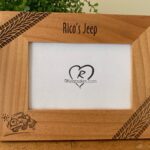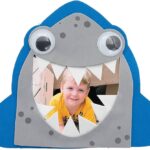I. Introduction to DIY Boards: Types and Uses
II. Essential Tools and Materials for DIY Board Projects
III. Step-by-Step Guide to Creating Your Own Custom Boards
Introduction to DIY Boards: Types and Uses
Hey there, DIY enthusiast! Are you ready to dive into the exciting world of DIY boards? Whether you’re a seasoned crafter or just getting started, there’s something exhilarating about creating custom boards that suit your unique style and needs. From a personal touch to practical uses, DIY boards can transform any space or project. Let’s explore the various types of DIY boards and their amazing uses!
What Are DIY Boards?
At their core, DIY boards are customizable surfaces that you can create, modify, and use for a variety of purposes. They range from simple pinboards to elaborate display boards and everything in between. The beauty of DIY boards is that they allow you to express your creativity while also serving practical functions in your home or workspace.
Types of DIY Boards
When it comes to DIY boards, the options are nearly limitless! Here are some popular types:
- Pin Boards: Perfect for organizing notes, photos, and reminders. You can use fabric, cork, or even a framed wire mesh for a chic twist!
- Whiteboards: Ideal for jotting down ideas, lists, or doodles. You can create a sleek dry-erase board with a simple piece of glossy board or paint a section of your wall with whiteboard paint.
- Chalkboards: A charming way to display messages and menus. Create a chalkboard surface using chalkboard paint on any board or even directly on a wall!
- Magnetic Boards: Great for holding notes and photos without the mess of pins or tape. Simply attach a sheet of metal to your wall or use a magnetic board for easy access.
- Display Boards: Whether for a presentation or showcasing your favorite photos, display boards can be customized to be eye-catching and informative.
- Vision Boards: A fantastic way to visualize your goals and dreams! Gather images and quotes that inspire you and arrange them on your board to keep motivation high.
Creative Uses for DIY Boards
Now that you know the types, let’s talk about how you can use these boards to enhance your life:
- Organization: Use pin boards to keep your life in check. From calendars to to-do lists, a well-organized pin board can help you stay on top of your game.
- Inspiration: A vision board can serve as a daily reminder of your dreams and aspirations. It’s a great way to stay focused on what really matters to you!
- Home Decor: Transform your ordinary walls into extraordinary displays with decorative boards that showcase your personality and style.
- Learning: For kids (and adults!), chalkboards and whiteboards are fantastic tools for learning, brainstorming, and practicing new skills!
- Communication: Use a magnetic board or a chalkboard to leave messages for family members or housemates. It’s a fun way to keep everyone in the loop!
So, whether you’re looking to organize your workspace, inspire creativity, or simply add a personal touch to your home, DIY boards offer endless possibilities. Get ready to unleash your creativity and make something truly special!
Essential Tools and Materials for DIY Board Projects
So, you’ve decided to dive into the world of DIY boards—awesome choice! Whether you’re crafting a cutting board, a display board, or perhaps something more creative like a custom game board, having the right tools and materials is absolutely crucial. Let’s break down what you’ll need to get started smoothly!
1. Basic Tools
First off, let’s talk about the essential tools that will make your life a whole lot easier:
- Measuring Tape: Precision is key in DIY projects. A good measuring tape will help you get those dimensions just right!
- Square: A carpenter’s square is perfect for ensuring your edges are straight and your corners are right angles.
- Pencil: A simple pencil is essential for marking your measurements. Just remember, it’s always better to mark lightly—you can always go back and darken your lines later!
- Saw: Depending on the type of board you’re creating, you may need a handsaw or a jigsaw. If you’re working with thicker materials, a circular saw might be your best bet.
- Sanding Block or Power Sander: After cutting your board, you want to ensure the edges are smooth. A sanding block will help you achieve a nice finish.
- Drill: If your project requires holes (like for dowels or screws), a drill is essential. A corded or cordless drill will both do the job!
- Clamps: These handy tools will hold your materials securely in place while you work, ensuring accuracy and safety.
2. Materials You’ll Need
Now that we’ve got the tools covered, what about the materials? Here’s a quick rundown:
- Wood: This is the star of your show! Choose the right type of wood based on your project. Softwoods like pine are great for beginners; hardwoods like oak or maple are more durable but may require advanced skills.
- Wood Glue: For assemblies that need a strong bond, wood glue is your best friend. It’s generally stronger than nails or screws alone.
- Nails/Screws: Depending on your project, you may need nails or screws to keep everything together. Make sure to pick the right size for your materials!
- Finishing Products: If you want your board to shine, consider wood stain, varnish, or a food-safe finish (if it’s a cutting board). These will protect your board and give it that polished look.
3. Safety Gear
Let’s not forget safety! It’s super important to protect yourself while you work:
- Safety Glasses: Keep those peepers safe from wood chips and dust!
- Ear Protection: If you’re using power tools, ear protection can help shield your ears from loud noise.
- Dust Mask: A dust mask will keep you from inhaling sawdust, especially when sanding.
And there you have it! With these tools and materials in hand, you’re all set to start your DIY board project. Remember, the most important part is to have fun and enjoy the creative process. Happy crafting!
Step-by-Step Guide to Creating Your Own Custom Boards
So, you’re ready to dive into the world of DIY boards? Fantastic! Whether it’s a corkboard for your home office, a custom game board for family night, or a decorative display for your favorite photos, making your own board is a rewarding project. Let’s walk through this step-by-step process, ensuring you have a smooth and enjoyable experience!
Step 1: Gather Your Materials
Before we start crafting, let’s gather the essentials! Here’s a checklist to help you:
- Base Material: Choose from cork, wood, foam board, or cardboard—decide based on your project.
- Adhesive: Whether it’s glue, double-sided tape, or a glue gun, ensure it’s suitable for your chosen materials.
- Tools: Scissors, a cutting knife, and a ruler are your best friends here!
- Decorations: Think about paint, fabric, markers, or photos to personalize your board.
Step 2: Measure and Cut Your Base
Once you’ve got everything together, it’s time to measure and cut. Take your ruler and mark the dimensions you want for your board. Whether it’s a small pinboard or a large canvas, accuracy is key! Use a sharp cutting tool, and take your time—this step sets the foundation for your project.
Step 3: Design Your Layout
Now comes the fun part—designing! Before you start sticking anything down, lay out your decorations on the board without attaching them. Try different placements, and don’t hesitate to rearrange until you find a design that sparks joy. Remember, creativity knows no bounds!
Step 4: Secure Your Decorations
Once you’re happy with your layout, it’s time to secure everything in place. Apply your adhesive carefully, ensuring that all edges are fully attached. If you’re using fabric or paper, smoothing it out as you stick it down will help avoid pesky bubbles. Patience here will pay off!
Step 5: Add Finishing Touches
After everything is attached, step back and take a look. Does it need a little something extra? Maybe a frame, some string lights, or a few decorative pins to make it pop? This is your chance to let your personality shine through!
Step 6: Let It Dry and Enjoy
Once your project is completed, give it some time to dry. This is crucial for ensuring everything stays put. After it’s dried, find the perfect spot to hang or display your new custom board. And don’t forget to step back and admire your hard work—take pride in what you’ve created!
Bonus Tip: Maintenance and Updates
Your DIY board is not just a one-time project; it can evolve! Feel free to refresh it over time. Change out photos, add new notes, or switch around the decorations to keep it feeling fresh and personal.
Creating your own custom board is not only a fun project, but it’s also a wonderful way to showcase your style and keep organized. So grab those materials and let your creativity flow!










Comments